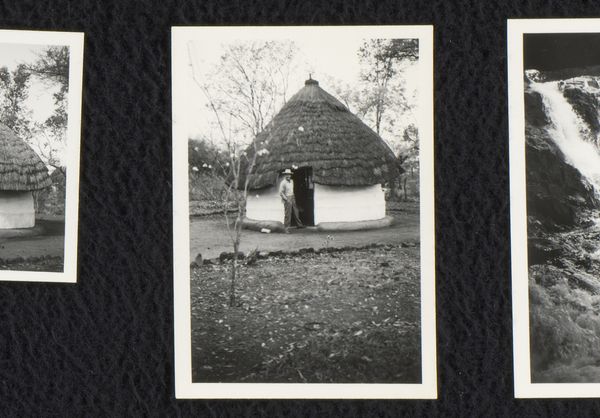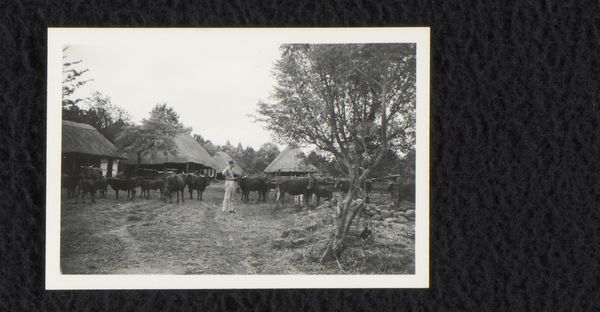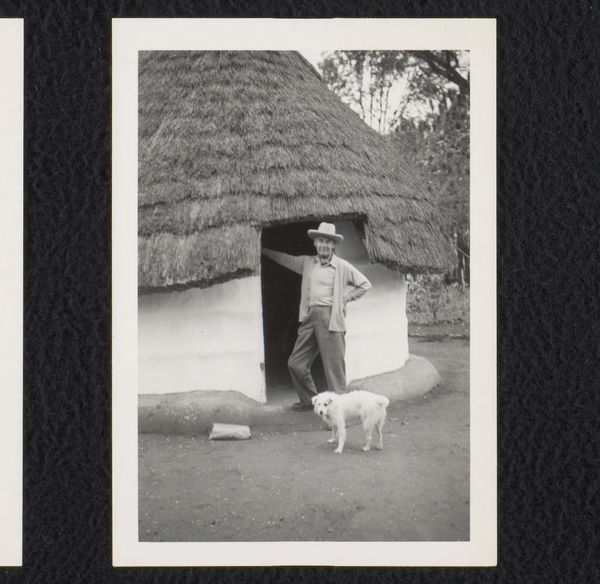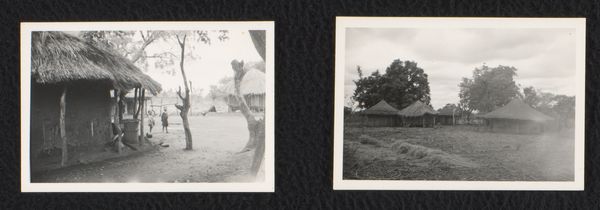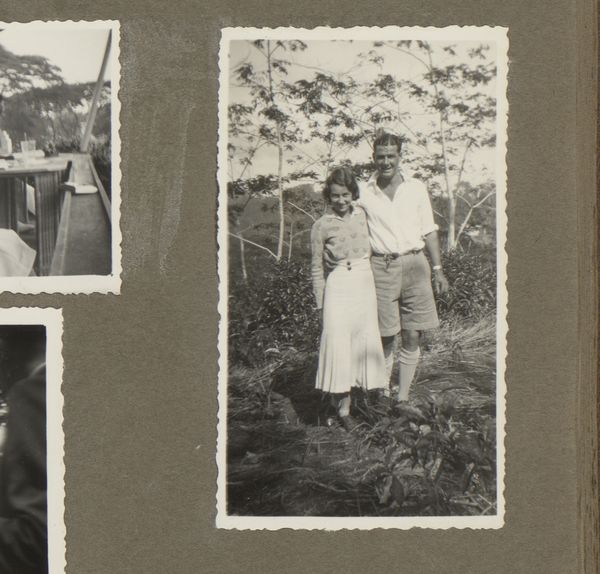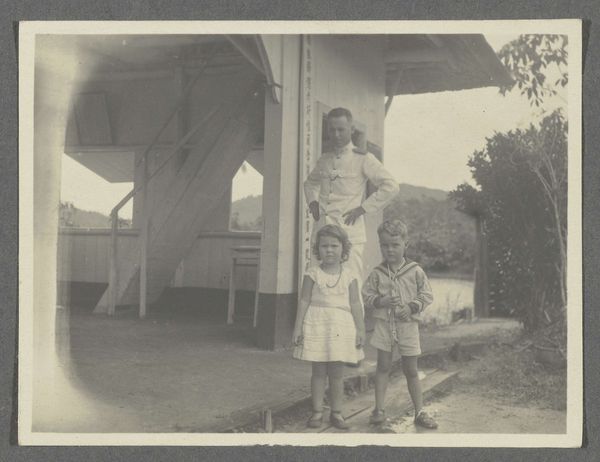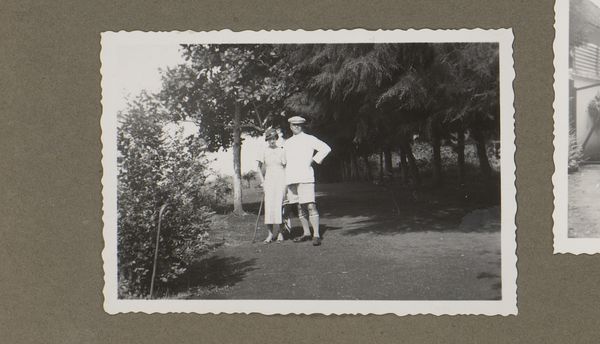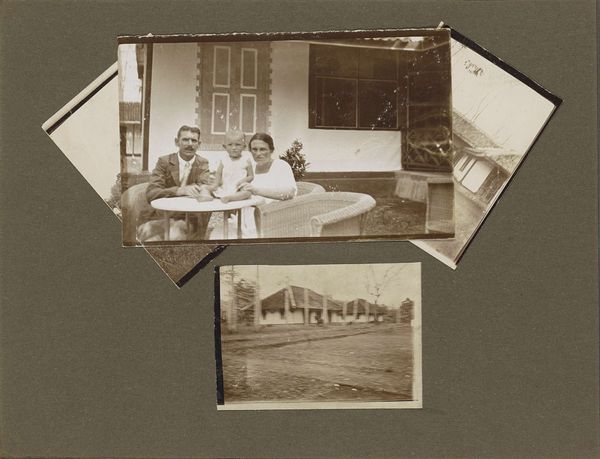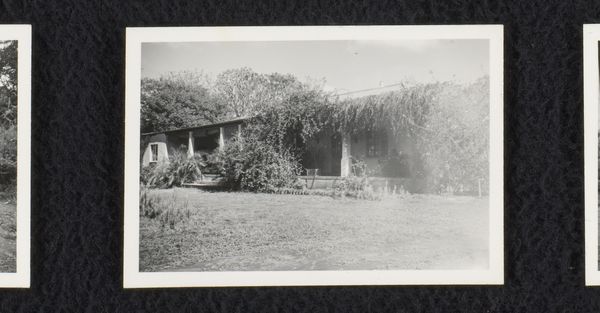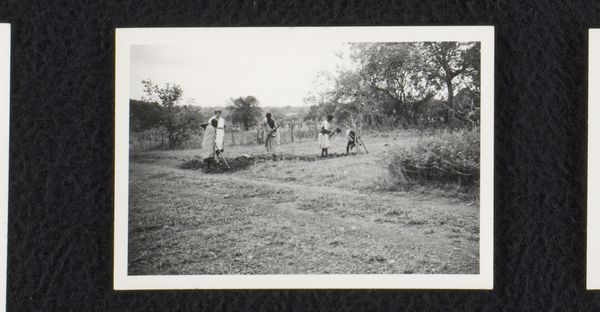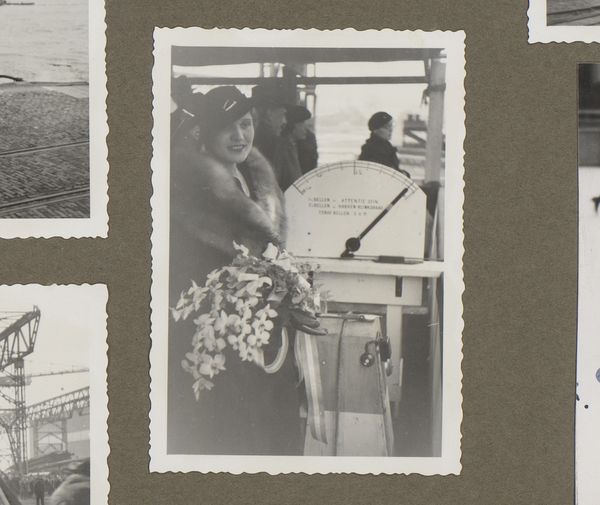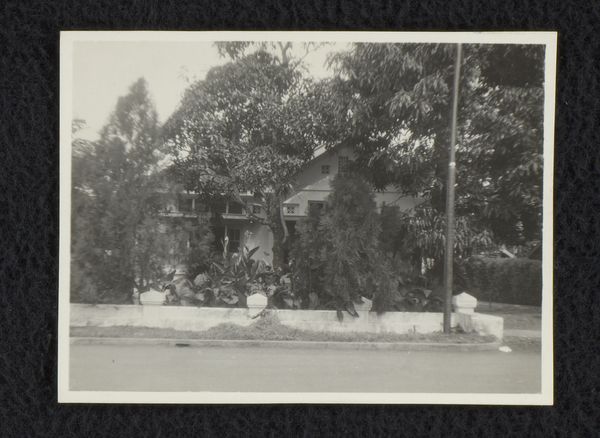
Onbekende man bij een lemen huis, vermoedelijk in Transvaal, Zuid-Afrika 1967 - 1971
0:00
0:00
photography
#
portrait
#
african-art
#
landscape
#
photography
#
realism
Dimensions: height 60 mm, width 60 mm
Copyright: Rijks Museum: Open Domain
Curator: So, let’s talk about this image by Willem Jacob van den Berg, titled “Unknown Man at a Mud House, Possibly in Transvaal, South Africa,” taken between 1967 and 1971. Editor: Immediately, I see a stark yet compelling juxtaposition. A western man in classic colonial garb leaning casually against, presumably, a traditional mud dwelling. The scene is visually simple but conceptually rich with implied narratives about labor and landscape. Curator: Yes, it does pose a lot of questions. It invites a certain reflection, doesn't it? There's something haunting about the everyday. This feels so staged, almost a portrait within a landscape. It makes me wonder what Van den Berg was thinking, seeing this brief convergence. The contrast, the stillness. Did he imagine what this would tell us now? Editor: It speaks volumes. I keep thinking about the material choices, the vernacular architecture. The labour to create this home, in comparison to the apparent ease the man has in relation to it. The walls look like they are formed of layers of sediment, aren’t they? Raw material shaped with a collective skill set passed down over generations—a stark counterpoint to what seems to be this visitor. I'm struck by the difference. Curator: Absolutely, it hits on something primal – home, belonging, identity. This interplay, like a half-remembered dream. Does this transient visitor realize the history baked into that earth? And the shadow. That's how time operates here – layering, settling. What mark will the temporary leave? Editor: Indeed. Think of the construction, the hands that gathered those thatching materials for the roof, likely sourced locally and formed by practiced hands. That roof, a material accomplishment using local grasses that would shed water and create insulation, that are then placed so precisely that it withstands the elements. This dwelling is made from, and returns to, the earth. Curator: It’s a moment frozen, yet the air vibrates with unspoken stories, the kind photography does best. It's almost a provocation. Editor: Agreed, and if we think about this exchange, the viewer now encounters and judges the past as if they could control how the land should exist or the hands it should be for. The materials make these assumptions clear to the contemporary audience, whether intentional or not. Curator: Such an interesting, evocative discussion to be had. I wonder what more conversations and reflections can happen in the space.
Comments
No comments
Be the first to comment and join the conversation on the ultimate creative platform.
